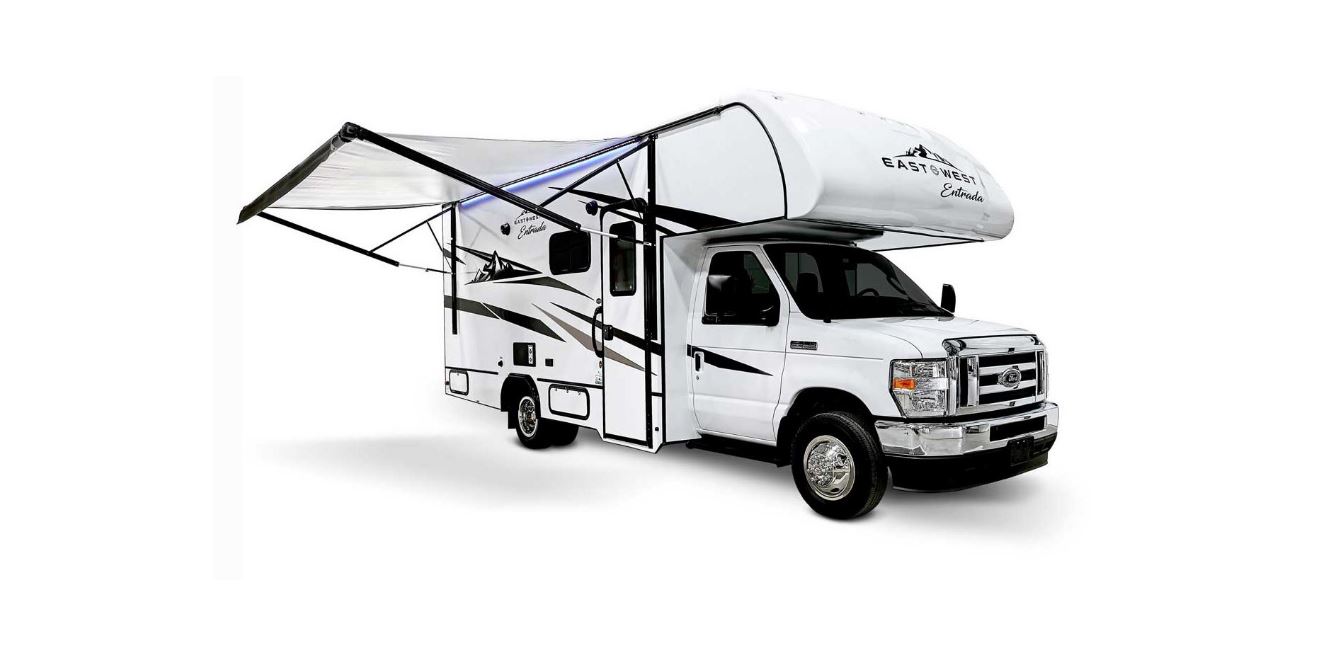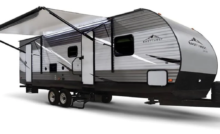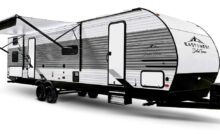2022 East to West Entrada Motorhomes Weighing Your Recreational Vehicle Owners Manual




2022 East to West Entrada Motorhomes Weighing Your Recreational Vehicle


Weighing Your Recreational Vehicle
In order to properly compute your load and load distribution, you must know both actual scale weights and the GAWR and GVWR found on the Weight Label on the RV. Weigh the RV with all anticipated equipment, luggage, and fluids onboard as if you were beginning your trip. You will also need to weigh the RV periodically to ensure you are maintaining the correct weight and load distribution.
To properly weigh your towable recreational vehicle, follow this procedure:
- With full fuel tanks and a typical passenger load, weigh the tow vehicle separate from the RV. Record this UNLOADED TOW VEHICLE WEIGHT.
- Before weighing the RV, fill the propane tanks. If you plan to travel with fresh water onboard, the freshwater tank should also be filled to the level you intend to carry when traveling. Your waste tanks should be empty.
- Hitch the RV to the tow vehicle and pull onto the scale so that ONLY the tow vehicle is on the scales. Record this as the tow vehicle’s LOADED TOW VEHICLE WEIGHT.
- IMPORTANT: The LOADED TOW VEHICLE WEIGHT of the tow vehicle MUST BE LESS than the tow vehicle’s listed GVWR. If you exceed the tow vehicle’s listed GVWR, you must remove or shift weight off the RV’s hitch accordingly.
- Subtract the UNLOADED TOW VEHICLE WEIGHT from the LOADED TOW VEHICLE WEIGHT to calculate the RV’s HITCH WEIGHT.
- For safe towing, the recommended HITCH WEIGHT for a travel trailer should be approximately 10% – 15% of the total TRAILER WEIGHT. The recommended HITCH WEIGHT for a fifth wheel should be approximately 15% – 25% of the total TRAILER WEIGHT.
- Proper care and consideration should be taken when weighing/loading a Sport Utility Trailer to allow for excessive cargo weight in the rear.
- Drive the tow vehicle AND the trailer fully onto the scale and record the weight as the GROSS COMBINED WEIGHT. The GROSS COMBINED WEIGHT minus the UNLOADED TOW VEHICLE WEIGHT equals the TRAILER WEIGHT.
- IMPORTANT: The TRAILER WEIGHT MUST BE LESS than the recreational vehicle’s listed GVWR. If you exceed the RV’s listed GVWR, you must remove weight accordingly.
- Pull forward until ONLY the trailer’s axles are on the scale. Record this weight as the AXLE WEIGHT.
- IMPORTANT: The AXLE WEIGHT of the recreational vehicle MUST BE LESS than the recreational vehicle’s listed GAWR. If you exceed the RV’s listed GAWR, you must remove or shift weight accordingly.
If your recreational vehicle has dual axles, you can get a weight for each axle by stopping on the scale with the first axle on the scale and noting the weight. Then drive so that both axles are fully on the scale and note that weight as well. (Weigh masters are accustomed to this procedure and, if you explain what you intend to do, will usually help you with this.) At this point, if you have any overload or imbalance, redistribute the weight and reweigh the RV. When you become familiar with how to load and weigh your RV, make a list and diagram to carry with you for easy reference. Weight distribution is extremely important in the handling and wear of your RV. Remember to add the weight of any items purchased on your trip to the starting weight of your RV and to distribute the weight evenly. Also, keep in mind that if you make any major changes in the items you are carrying, it will be necessary to reweigh your RV. Use packing material around breakable items such as plates and glasses if you will be traveling over rough roads or terrain. It is a good idea to use non-skid materials under heavier items to help prevent breakage or load shifting. Resist the temptation to carry more supplies than you need. It is important to remember that the weight of items you purchase while traveling must be added to the camper weight, and you may need to rearrange items to maintain correct load distribution.
WEIGHING TIPS
- Cargo weight may vary greatly and will affect the total weight of your recreational vehicle. Always weigh the recreational vehicle at a certified weigh station equipped with platform scales.
- If you find that you have exceeded the GVWR of the recreational vehicle, you will have to remove items until you are within the specified limits. If you find that you have exceeded either of the GAWR’s, you will need to redistribute the load within the recreational vehicle to meet the specified limits.
- To help ensure that items will be evenly distributed, plan ahead before loading your RV. Not only will the recreational vehicle handle better, you will also have reduced tire wear and increased fuel economy.
- DO NOT store heavy items near the front or rear of the RV as doing so could cause damage.
- To help keep weight reduced, empty the holding tanks before leaving on a trip and as often as possible when traveling. Carry only as much water as you will need for traveling. If needed, the water tanks can be used to help balance the weight in the RV (a gallon of water weighs 8.3 pounds).
To avoid overloading, you must understand that the GVWR is the most weight your RV was designed to carry. The GVWR is the weight of the entire contents of the RV as measured at the axles and on the tongue or hitch.
WARNING
DO NOT EXCED THE GVWR OF THIS RV. This information is listed on the “Trailer Weight Information” sticker located on the driver’s side (or road side) front corner of the RV
TOW VEHICLE REQUIREMENTS
Your tow vehicle’s towing capacity MUST be greater than the Gross Vehicle Weight Rating (GVWR) of your RV. Contact your automotive dealer to confirm the towing capacity of your vehicle, whether you are buying a new tow vehicle, or will tow your RV with one that you already own. Some automotive manufacturers publish brochures that discuss towing considerations. Ask your automotive dealer how to obtain a copy of this information. Verify that the weight ratings listed in the brochure are for your exact vehicle. A popular towing guide resource for RV consumers can be found at https://www.trailerlife.com/trailer-towing-guides/
Recent Posts
VW Jetta Engine Fuse Box Diagram
Access the comprehensive 2010-2018 VW Jetta Passenger Fuse Box Diagram to troubleshoot electrical issues effectively.…
VW Jetta Passenger Fuse Box Diagram
Explore the comprehensive VW Jetta Passenger Fuse Box Diagram to troubleshoot electrical issues effectively. Understand…
2023 Ford F-150 Lightning Fuse Box Diagram
Under Hood Fuse Box Location Remove the front luggage compartment cover. Under Hood Fuse Box…
2022 Kawasaki NINJA H2 SX SE Brake Lever Adjuster Owner’s Manual
2022 Kawasaki NINJA H2 SX SE Brake Lever Adjuster Owner's Manual NOTICE Only adjust the front…
2023 Land Rover Range Rover Evoque Exiting The Vehicle Owners Manual
2023 Land Rover Range Rover Evoque Exiting The Vehicle SINGLE LOCKING WARNING Before exiting the…
2023 Land Rover Range Rover Evoque Front Seats Owners Manual
2023 Land Rover Range Rover Evoque Front Seats FRONT SEAT SAFETY Make sure to read…


